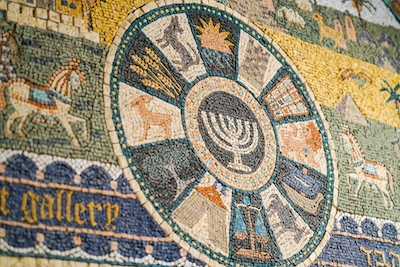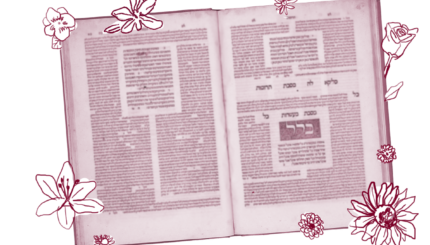Today, a talmudic conversation about burying a person who has been executed morphs into a conversation about burial in general, and then we learn of this folk custom:
People would take dirt from the grave of Rav as a cure for a one-day fever. A number of people came and told Shmuel about this practice.
This is not the first time that the Gemara reports a method for curing a fever (see Shabbat 66b and Gittin 67b). But this one is potentially problematic because it is forbidden to derive benefit from a corpse, and by extension the grave in which it is buried. Perhaps for this reason, or possibly because they are concerned that Rav’s final resting place is being desecrated by those seeking a cure for their illness, some concerned citizens report the matter to Shmuel, who responds:
They are acting properly, as the dirt in the grave is natural ground, and natural ground does not become forbidden (for benefit) in any situation.
In general, the prohibition against deriving benefit from a corpse extends to items that come in contact with a corpse, like a burial shroud. However, Shmuel notes that the earth in a grave is different because it is part of the “natural ground,” so it is not the exclusive province of the corpse and therefore may be used for benefit.
Note that Shmuel does not tell us what he thinks of this practice. He is silent about the effectiveness of this practice, nor he does not comment on the appropriateness of taking dirt from the grave of an important rabbi. Rather, he responds narrowly, informing those who have brought the matter to his attention that the practice is not forbidden by law.
In rabbinic times, many burial sites, especially of prominent rabbis, were caves. Dirt could be taken from the walls or floor without disturbing the burial location. As burial practices evolved, and bodies were more commonly buried in the ground, some legal commentators stuck with Shmuel’s ruling that it is permitted to take the dirt from a gravesite and use it for other purposes. The Shulchan Aruch, Joseph Caro’s authoritative work on Jewish law, sides with Shmuel. Moshe Isserless, whose glosses on Caro’s work have been added to the standard editions of the text, gives voice to a different approach:
Some say that the earth which they removed from the grave and then placed it back upon the deceased is regarded as a loose object and is forbidden for profitable use.
In other words, the law differentiate between the untouched earth that surrounds a grave and the dirt which was dug out to allow for a coffin to be placed in the ground: The former may be taken and used for other purposes, like curing a fever, while the latter cannot.
The difference between the two opinions is based on the susceptibility of dirt that is placed upon a grave to impurity. In general, impurity from a corpse travels vertically, therefore affects the dirt directly above the grave. Yet it’s not clear that purity concerns are what troubled the original complainants. Purity is important for entering the Temple, but there was no Temple in the rabbinic period. It does not seem like such a reach to conclude that those who were bothered by the practice of using dirt from Rav’s grave as medicine were more concerned that the folk custom in question was disrespectful to Rav and the sacredness of his final resting place.
Read all of Sanhedrin 47 on Sefaria.
This piece originally appeared in a My Jewish Learning Daf Yomi email newsletter sent on February 2, 2025. If you are interested in receiving the newsletter, sign up here.

Help us keep Jewish knowledge accessible to millions of people around the world.
Your donation to My Jewish Learning fuels endless journeys of Jewish discovery. With your help, My Jewish Learning can continue to provide nonstop opportunities for learning, connection and growth.



